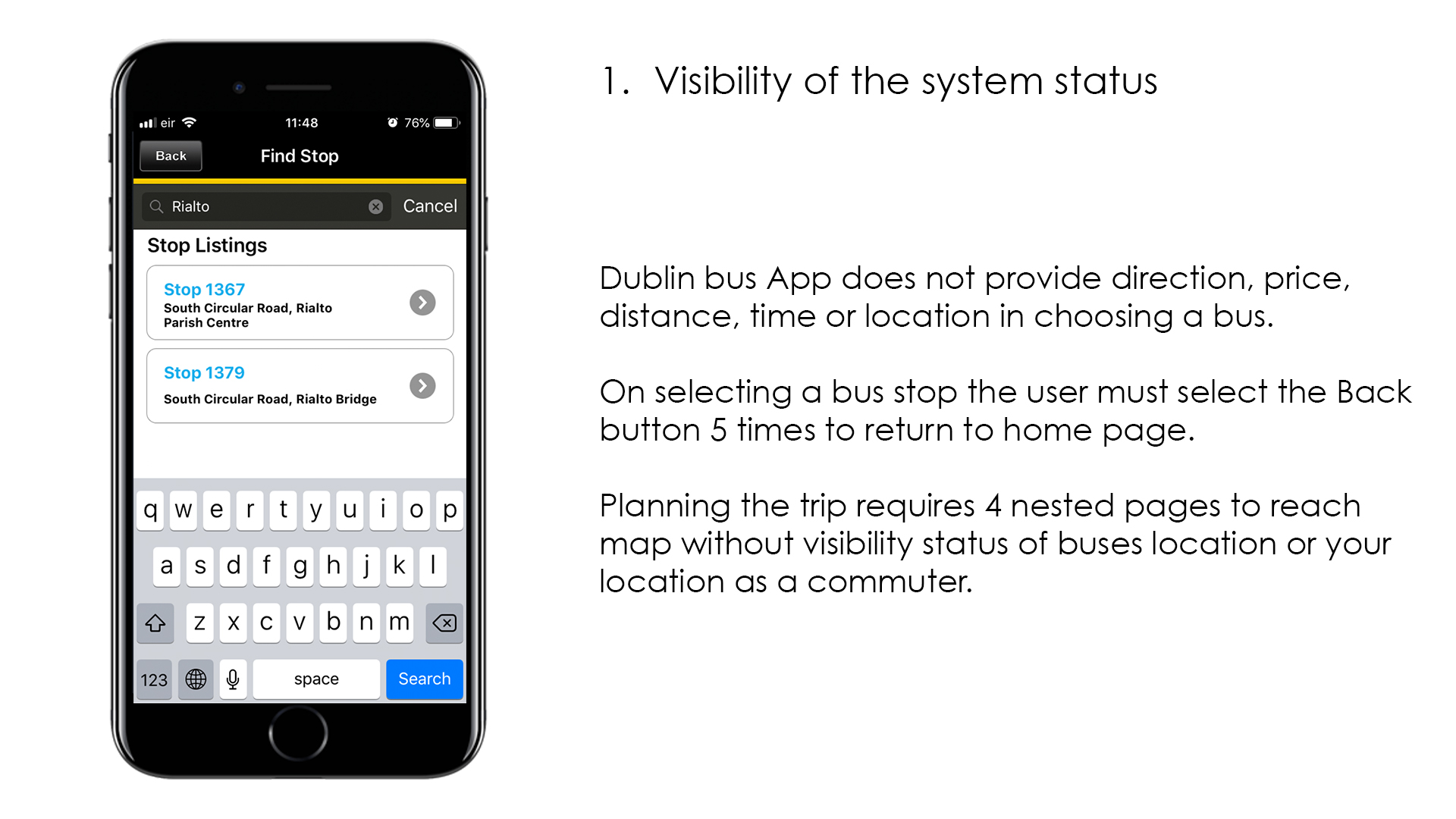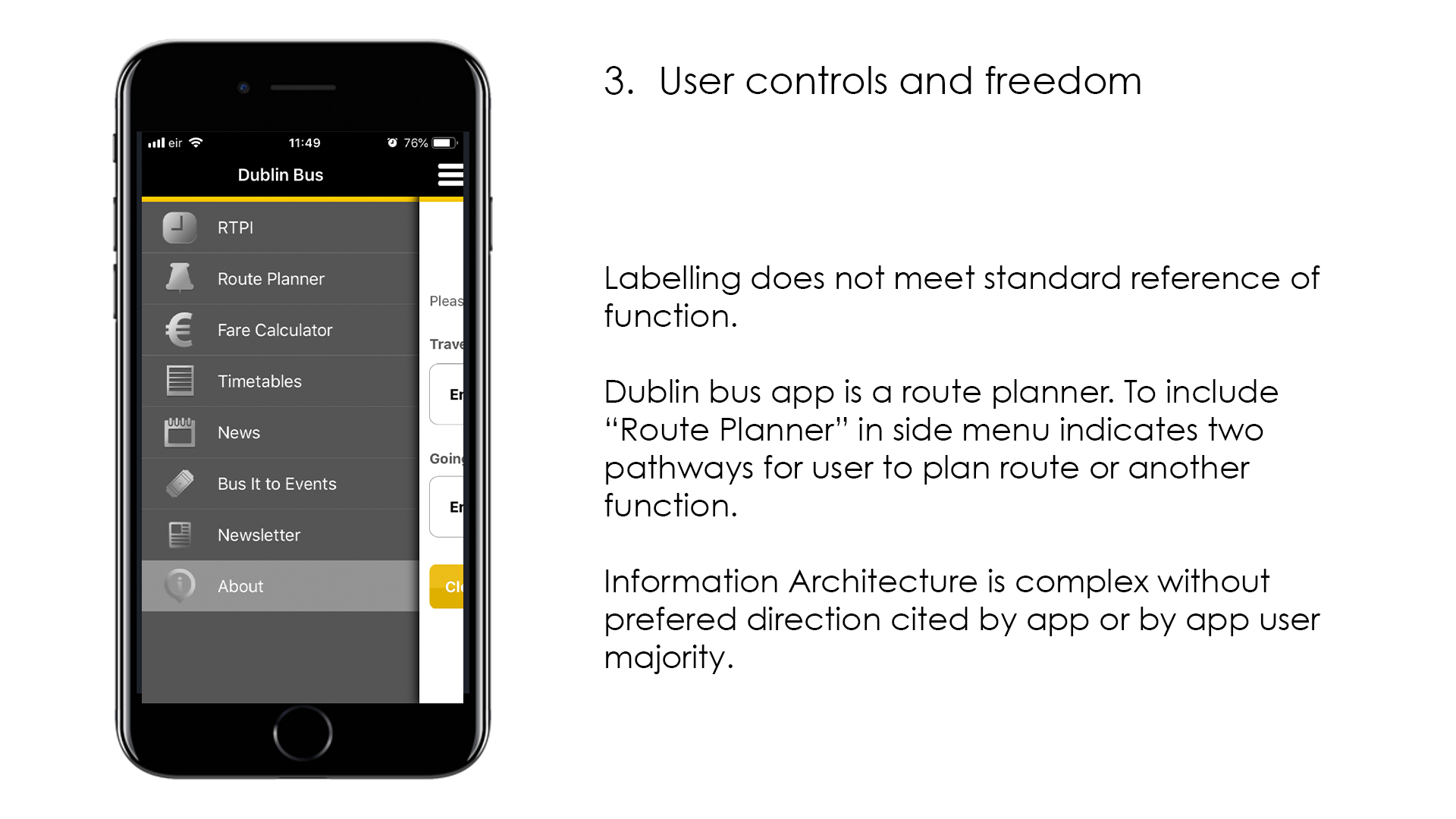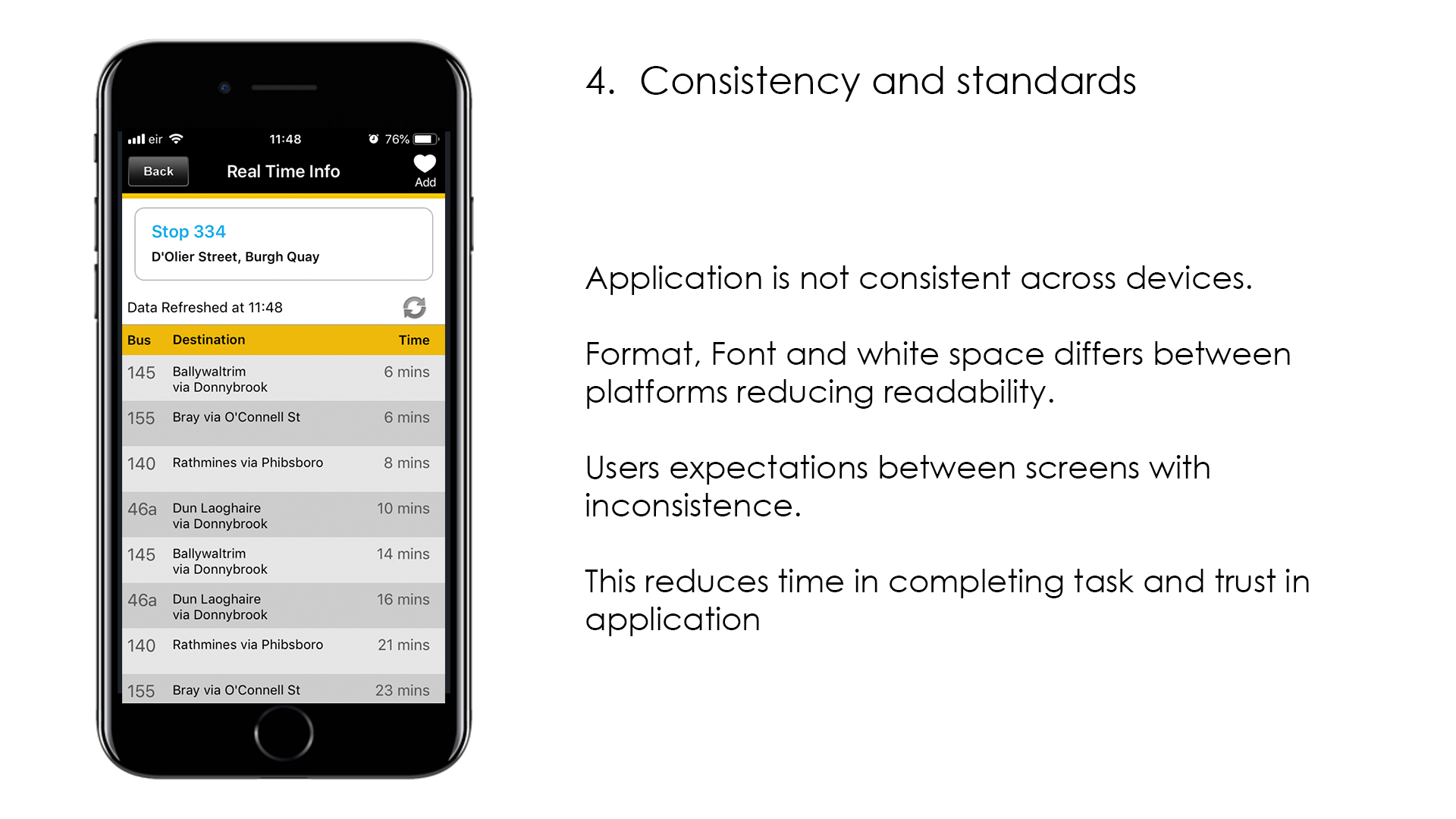Introduction
As part of the Masters in User Experience Design course at IADT my team and I reviewed and redesigned the Dublin Bus App.
Alongside Rory Bradley and Julie Rosa who both have a background in Graphic Design, we determined through user research and user design methodologies how best to approach instigating a new model of the Dublin bus app to improve commuters’ experience of the application. As commuters in Dublin city we are familiar with the app and know people who use it, as well as existing attitudes to the Dublin Bus App.
Approach
Together we evaluated the Dublin bus app utilising the Nielsen Heuristic Evaluation Model to decide what factors of the app, based on work flow and task analysis, we would iterate on in further user research. We framed the process of this design off of Stanford Design Thinking Model for a solution-based approach, (Dam, 2019).
From there we proceeded to conduct in depth user research with one-to-one interviews, created user personas and constructed empathy maps based on affinity maps. Heuristic evaluation provided a foundation in modelling a new design for the Dublin bus app by referring to users for feedback and iterating on our findings.
We took into account the demographics of users and the Dublin Bus infrastructure. Of the city’s 600,000 population and 1.2 million visitors, 350,000 people take Dublin bus daily, with the Dublin Bus fleet (1,010) covering 5,000 stops. As a result, the redesign must be sensitive to the diverse requirements of such a large user base, including accessibility and simplicity of design considering universal usability, (Dublin Bus, 2019).
Wireflow
Our first step to understanding the user was to analyse the Dublin bus app to garner a better understanding of the information architecture. The architect Richard Saul Wurman coined the term information architecture in terms of “creating structure or a map” to “address needs of clarity” and “make the complex clear”, (Chan, 2019). We did so by creating a ‘wire-flow’, a term Laubheimer ideated to acknowledge every pathway or “work flow ” the Dublin bus app user had available to them, by a series of screenshots, (Norman, 2019).
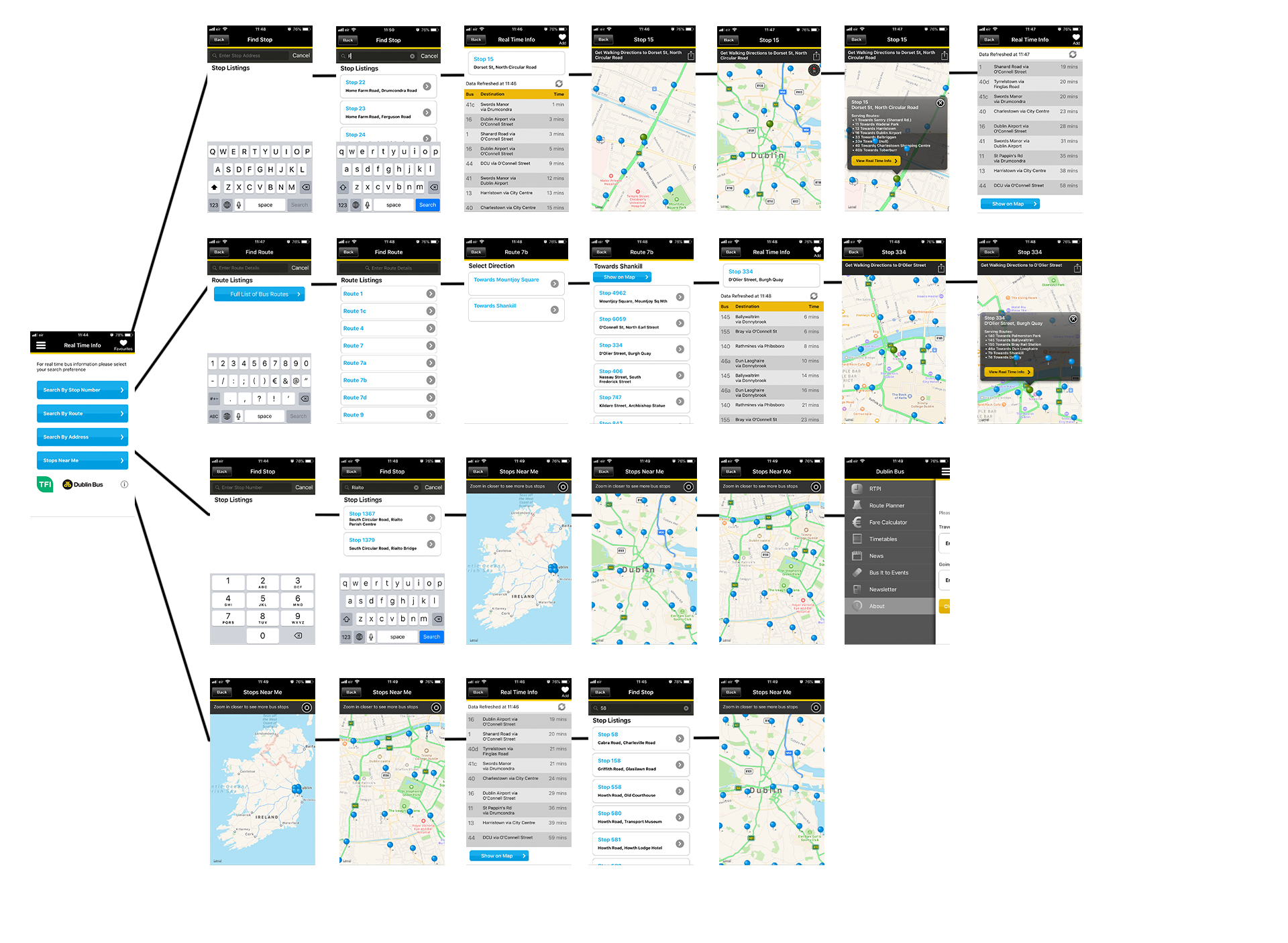
Heuristic Evaluation
After reviewing the wire flows we went on to evaluate the handling of these user tasks and how the app operated for the performance of these tasks.
We referred to Nielson’s 10 Heuristics to perform a complete assessment of the Dublin bus app. Please refer to Appendix A for a full review. We identified 5 of Neilson’s Heuristics to which the app fundamentally failed to conform, compromising its function, (Nielsen, 1984). These were:
- 1. Visibility of the system status
- 2. Match between system and the real world
- 3. User controls and freedom
- 4. Consistency and standards
- 5. Aesthetic and minimalist design
Problems: Dublin bus app does not provide live tracking data of the bus’s location prior to reaching the stop or on the journey, status of your current location and route journey is not visible)
Problems: Converging real time data and progress of journey route and bus arrival times were inaccurate across pages or not visible to the user, these with determinate indicators inaccurate, (Design, 2017)
Problems: No accessibility e.g. audio settings
Problems: fallow areas in the design, discrepancies across devices, font size and colour scheme changed throughout application
Problems: Von Restorff effect - if all buttons are the same the direction the user takes is not clear; Gutenburg principle states that having a button higher on the button that it confuses users based on eye-tracking testing
The overarching system function of the existing DBA is provision of route information. Interestingly, this does not align with the needs of the user. The user seeks a journey planner which updates them on their progress, which the current static interface does not supply.
Task Flow
After evaluating the Dublin bus App using Nielson’s 10 heuristics we concluded from our readings that the Dublin bus App fell within manipulative design by lacking hierarchy in the design. The task flow is based on the dot notation diagram which was developed in the 1930s through computer mapping, (Lucidchart.com, 2018).
- We struggled to find the bus stop
- The user would have to go back 6 steps to the home page
- The hamburger menu was orthogonal
- it provided little additional information for catching a bus.
Whilst I completed the wireframes and Task flows, Rory drew up a list for tracking and managing our tasks for this project whilst Julie pulled up web links and documentation for us to gather sources and references for the upcoming research involving user experience methodologies. We extended our observations by having a member of the public who was new to the Dublin Bus App to complete our task of finding a bus stop, an introduction conducting our next step, user research.
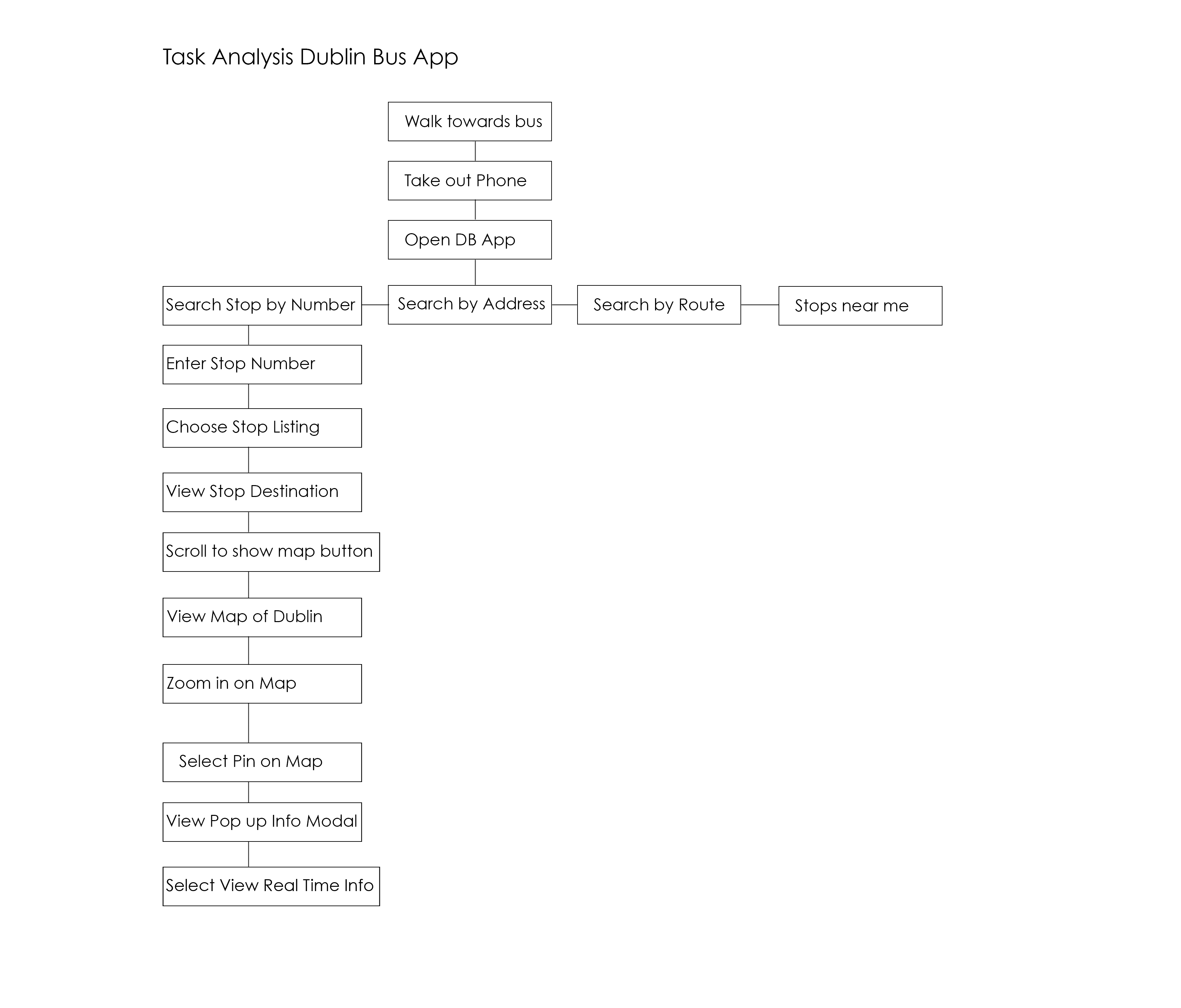
Whilst I completed the wireframes and Task flows, Rory drew up a list for tracking and managing our tasks for this project whilst Julie pulled up web links and documentation for us to gather sources and references for the upcoming research involving user experience methodologies. We extended our observations by having a member of the public who was new to the Dublin Bus App to complete our task of finding a bus stop, an introduction conducting our next step, user research.

